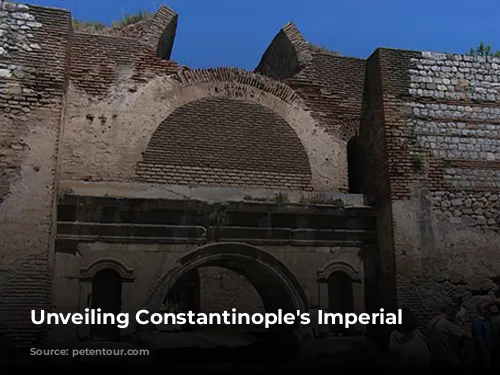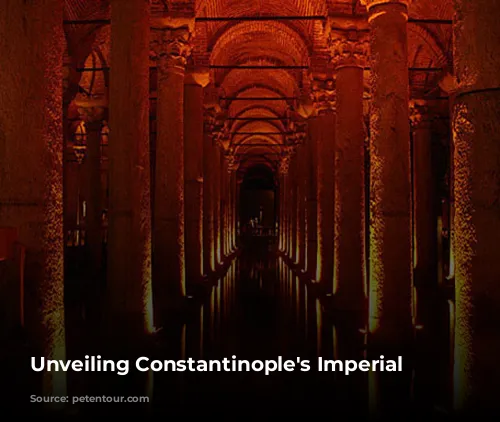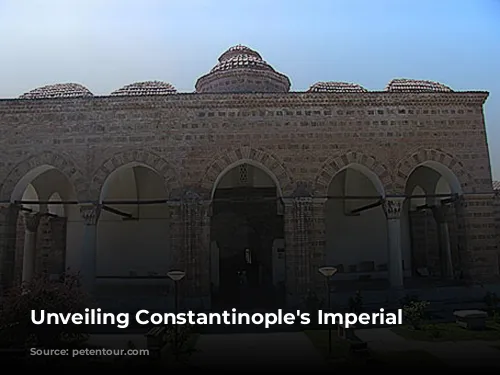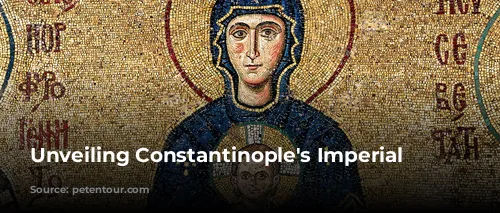This journey through time takes us back to the heart of the Byzantine Empire, exploring its majestic monuments, churches, and palaces. Let’s embark on a historical adventure using public transport, discovering hidden gems and iconic landmarks that tell the story of Constantinople, a city where history comes alive!
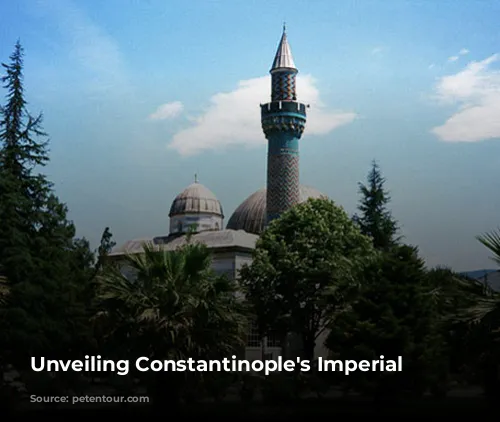
Byzantine Legacy in Istanbul
Our journey begins at the Hippodrome, a monumental structure that served as the center of life in Constantinople. Imagine the roar of the crowd as chariots raced around the arena, and the jubilant celebrations marking the triumphs of emperors and generals. This vast space, a testament to the grandeur of the Byzantine Empire, held the pulse of the city for over a millennium.
We then step into the serene beauty of the Church of SS Sergius and Bacchus, a masterpiece of Byzantine architecture. Constructed during the reign of Justinian, this church is a testament to the dedication of the Byzantine emperors to their faith. The church, dedicated to Roman soldiers martyred for their beliefs, stands as a poignant reminder of the early Christian era.
The Palace of Bucoleon, overlooking the Harbor of the Bucoleon, once served as a symbol of imperial power. While only remnants of this majestic palace remain today, the two lion statues guarding the port and the three marble-framed windows offer a glimpse into its glorious past. The Great Palace Mosaic Museum, once the grand residence of Byzantine emperors, now whispers tales of lavish ceremonies and courtly life through its excavated remains.
A delve into the Basilica Cistern, the largest underground cistern in Constantinople, reveals the ingenuity of Byzantine engineering. Built by Justinian after the Nika riots, this colossal structure was designed to ensure a steady water supply to the city, especially during the hot summer months. The imposing pillars that support the vaulted ceiling and the eerie silence create a sense of awe and wonder.
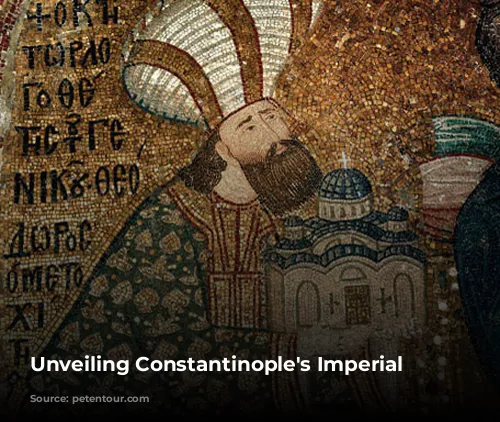
Churches and Monuments: A Tapestry of Faith and Power
The Church of the Pammakaristos, known locally as Fethiye Cami, enchants with its exquisite external brickwork and captivating mosaics. This architectural gem, erected by John Comnenus and his wife Anna Ducaena in the 12th century, served as the seat of the Patriarchate for over a century after the conquest.
The Church of the Pantocrator, also known as Zeyrek Cami, stands as a testament to the enduring legacy of Byzantine monasticism. This complex once comprised two churches, a chapel, and a hospice for the elderly, an asylum, and a renowned hospital. The vastness of this foundation reflects the importance of faith and charity in Byzantine society.
The Church of Constantine Lips, known as Fenari İsa Cami, was founded by Constantine Lips Dungarious, a distinguished commander of the Byzantine fleet. This monastic church, dedicated to the Virgin Mary, embodies the devotion of the Byzantine people to their faith.
The Church of St. Stephen of the Bulgars, built in 1871, stands as a bold statement of Bulgarian independence. This remarkable structure, constructed entirely of cast iron and shipped from Vienna, reflects the enduring spirit of the Bulgarian people.
The Greek Orthodox Patriarchate, rooted on its present site since the 17th century, carries on a long tradition of religious leadership. The present patriarchal church of St. George, dating back to the 18th century, embodies the enduring faith of the Orthodox Church.
The Church of St. Mary of the Mongols, uniquely distinguished as the only unconverted Byzantine church in Istanbul, stands as a testament to the enduring influence of the Byzantine heritage.
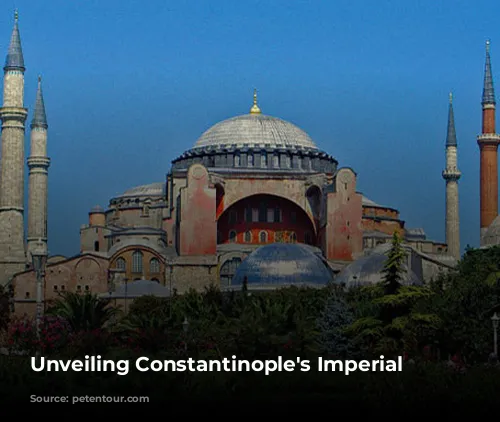
Hagia Sophia: A Triumph of Byzantine Architecture
The Kalenderhane Cami, once known as the Kyriotissa, represents a significant chapter in Byzantine history. This large and handsome church, restored by the Dumbarton Oaks Society, dates back to the 9th century, offering a glimpse into a crucial period in the Byzantine era.
Hagia Sophia, the Church of the Divine Wisdom, ranks among the most extraordinary architectural achievements of all time. This majestic edifice, built during the Golden Age of the Byzantine Empire, witnessed momentous events and served as a beacon of faith and culture, cementing its status as the enduring symbol of Byzantine Constantinople.
The Arap Cami, located in the historic district of Pera & Galata, represents the only example of Gothic religious architecture in Istanbul. This impressive structure, built by Dominican friars in the 14th century, stands as a testament to the diverse religious influences in the city.
The St. John of Studius (Imrahor Cami), founded in the 5th century, represents one of the oldest churches in Istanbul. This basilica, holding a significant relic of St. John the Baptist, serves as a reminder of the profound influence of the early Christian church.
The Walls of Theodosius, stretching for miles along the city’s landward side, stand as a testament to the Byzantine Empire’s defensive might. These formidable walls, constructed in the 4th century, secured the city against invaders for centuries.
The Golden Gate, a triumphal arch built by Theodosius I in 390, marks the entrance to the city through the Theodosian Walls. This iconic gate, once a symbol of imperial victory, continues to inspire awe and wonder.
The Yedikule (Seven Towers), a complex incorporating towers from both the Theodosian Walls and later additions by Mehmet the Conqueror, represents a fascinating blend of Byzantine and Ottoman architecture.
The Palaces of Blachernae & Porphyrygenitus (Tekfur Saray), nestled within the Theodosian Walls, offer a glimpse into the opulent lifestyle of Byzantine royalty. These magnificent palaces, built with intricate polychrome designs, have captivated visitors for centuries.
The Church of St. Saviour in Chora, renowned for its magnificent mosaics and frescoes, stands as a testament to the brilliance of Byzantine art. These breathtaking works of art, unparalleled in their beauty and detail, continue to inspire awe and wonder.
The Aqueduct of Valens, built in the 4th century, served Constantinople for over 1,500 years. This impressive structure, transporting water from sources outside the city, stands as a testament to the Byzantine Empire’s engineering prowess.
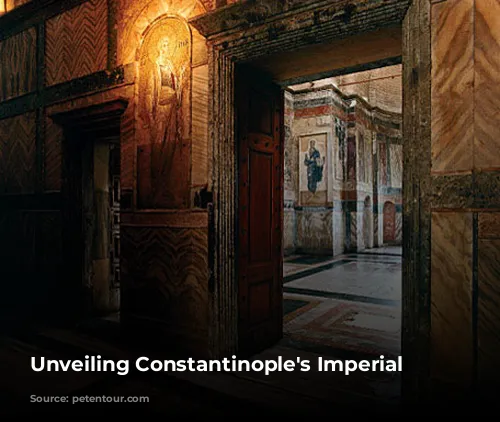
Nicaea: A City of Byzantine Majesty
After a delightful breakfast, we take a high-speed ferry to Nicaea (İznik), a beautifully walled city brimming with Byzantine history. Our first stop is the Church of Haghia Sophia, the most significant Byzantine monument in Nicaea. This majestic church, built by Justinian in the 6th century and rebuilt after an earthquake in the 11th century, served as the Cathedral of the Empire of Nicaea and hosted Imperial coronations.
The Walls of Nicaea, a double line of fortifications mostly dating back to the Byzantine period, stand as a testament to the city’s strategic importance. These walls, partially restored by the Ottomans, offer a glimpse into the city’s past.
The Archaeology Museum is housed in the Nilüfer Hatun İmareti, a charitable foundation complex built in the late 14th century by Murat I and his mother, a Greek princess. This beautifully restored building, offering lodgings and food to students and itinerant dervishes, now houses a rich collection of artifacts.
A visit to the Iznik Foundation provides an opportunity to learn about the renowned Iznik tiles and to witness the artistry of these skilled craftsmen.
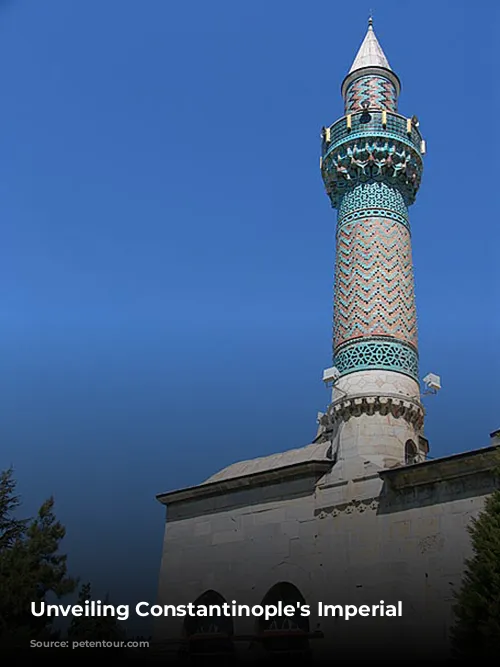
Istanbul’s Archaeological Museum: A Treasure Trove of History
Our final day in Istanbul is spent exploring the Archaeological Museum of Istanbul. The recently opened exhibition “İstanbul through the Ages” showcases a magnificent collection of Byzantine artifacts, including the 13th-century frescoes from the Church of Theotokos Kyriotissa, the 10th-century inlaid marble icons from the Church of Theotokos tou Libos, and early 6th-century sculptures from H. Polyeuktos.
This journey through time, punctuated by majestic monuments, vibrant churches, and awe-inspiring palaces, leaves us with a profound appreciation for the rich history and enduring legacy of the Byzantine Empire. The memories of this adventure will last a lifetime, leaving an indelible mark on our understanding of this incredible civilization.
